

Are you looking for ways to track employee time while respecting their privacy? With 43% of workers reporting that their employer monitors their online activity, this has grown to become a highly sensitive issue that needs immediate attention.
Against this backdrop, businesses should look to strike the perfect balance between accountability and trust. This begs the question: How can managers ensure productivity without compromising personal boundaries?
Today, we will take a look at 9 ethical, non-invasive time-tracking solutions that would promote transparency, safeguard employee privacy, and boost team morale. So, let’s delve right in.
Time tracking is legal and mandated by law in some states. However, some time-tracking system packs advanced surveillance features, and that’s where things get a bit tricky.
For instance, the Electronics Communications Privacy Act of 1986 does not permit the interception of electronic communications, but with certain exceptions.
To get a better idea, let’s look into the privacy laws at the state level.
California employers can legally monitor company-owned devices, and the rule is the same in other states as well. However, the story is different when it comes to informing employees.
Only employers in these four US states need to notify the staff members about tracking their work activity:
So, to avoid legal issues and break employee trust, make sure you comply with all the time tracking and employee monitoring laws in your state.
Transparency is the name of the game when it comes to employee monitoring. An Express VPN Survey found that 59% of employees feel stressed and anxious about their employers keeping an eye on their online activity.
Employees should always be informed about what is being tracked, whether it’s work hours, project progress, or app usage. Clear communication about the purpose of time tracking builds trust and ascertains that monitoring is not considered an attempt to invade privacy. Provide employees with a detailed explanation of the time-tracking tool, what data is collected, and how it will be used.
Clockdiary tops the list when it comes to employee-friendly time-tracking tools. For monitoring purposes, it features an “Activity Tracker ” that captures screenshots every 10 minutes, and that’s it. We also make it a point that no sensitive information reaches any third party. So, you can rest assured that with us, you can promote accountability while respecting employee privacy as well.
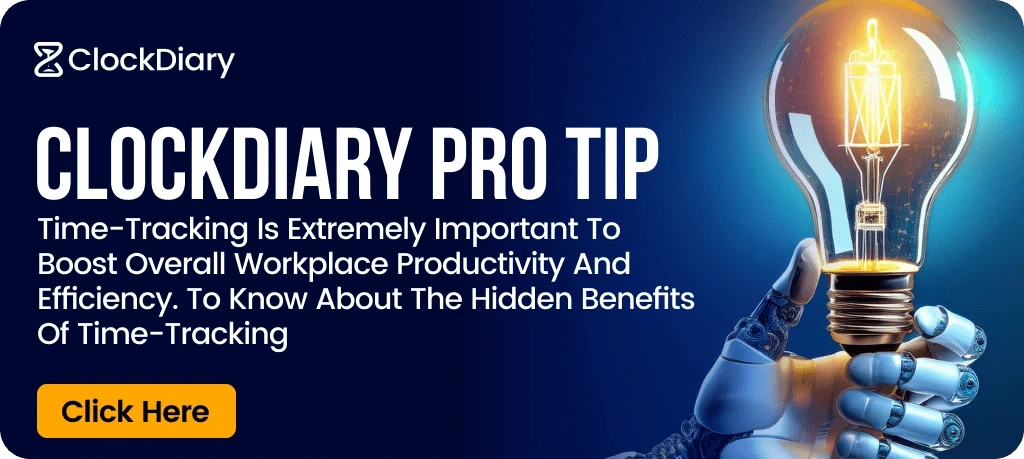
Protecting employee privacy entails keeping personal data confidential. When monitoring employee time, it’s crucial not to share sensitive information, such as personal details, work habits, or performance data, with unauthorized individuals. Sharing this data can breach trust and even lead to legal consequences.
Make it a point that only relevant managers and HR personnel should have access to time-tracking data, which should be utilized strictly for business purposes like payroll or project management. Safeguarding employee privacy promotes a respectful workplace and ensures that monitoring focuses solely on productivity, not personal intrusion.
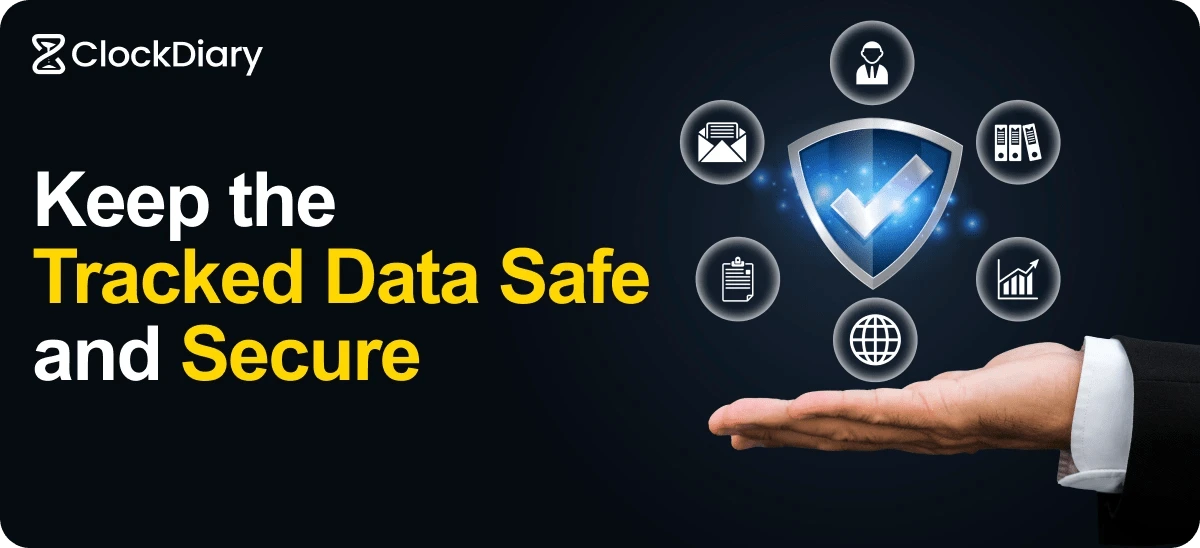
Clockdiary keeps employees’ tracked hours private by limiting who can view this data. For example, you can conceal the view of tracked hours from regular users, allowing them to see their own time only. In this way, employees can rest assured that no one else can view their data except their manager.
To track employee time without breaching privacy, it’s absolutely essential to generate an Acceptable Use Policy (AUP). This policy clearly outlines what is considered appropriate usage of company resources, such as computers, networks, and time-tracking tools.
By detailing the expectations for work-related activities and defining which monitoring practices will be implemented, the AUP promotes transparency and ensures that employees understand the boundaries. It also helps protect the company from legal risks and privacy violations.
Making employees sign off on an AUP before joining builds trust, thereby ensuring fair employee monitoring and respect for privacy rights.
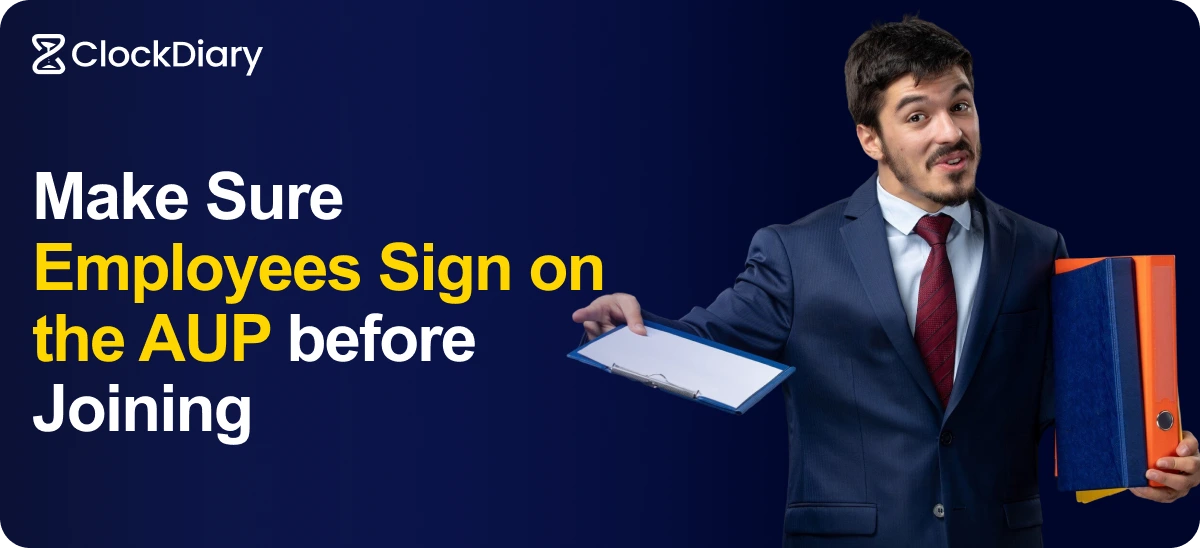
If you want to track employee time without breaching privacy, offer employees control over their time data. Empowering employees by allowing them to decide whether to track time manually or automatically or view and edit their own timesheets promotes a sense of ownership over their work hours. This transparency not only builds trust but also ensures accuracy in reporting.

By giving employees this autonomy, you create a positive work environment that respects individual privacy while ensuring effective time tracking, ultimately benefiting both the organization and its workforce.
Training employees is a critical step in monitoring time without breaching their privacy. It is advised that you provide comprehensive training on the time tracking system and policies so that employees understand the purpose of monitoring and how it benefits both them and the organization.
When you educate employees about data privacy, their rights, and the importance of accurate reporting, you cultivate a culture of trust and accountability. Employees should freely voice concerns or ask questions. This proactive approach not only enhances compliance with time tracking but also reassures employees that their privacy is respected, thereby creating a more harmonious workplace.
Regularly updating your policies is essential for tracking employee time without breaching privacy. As workplace dynamics and technology evolve, your policies should reflect current best practices and legal requirements. This ensures that employees know what is being monitored and its purpose, thereby ensuring transparency and trust.
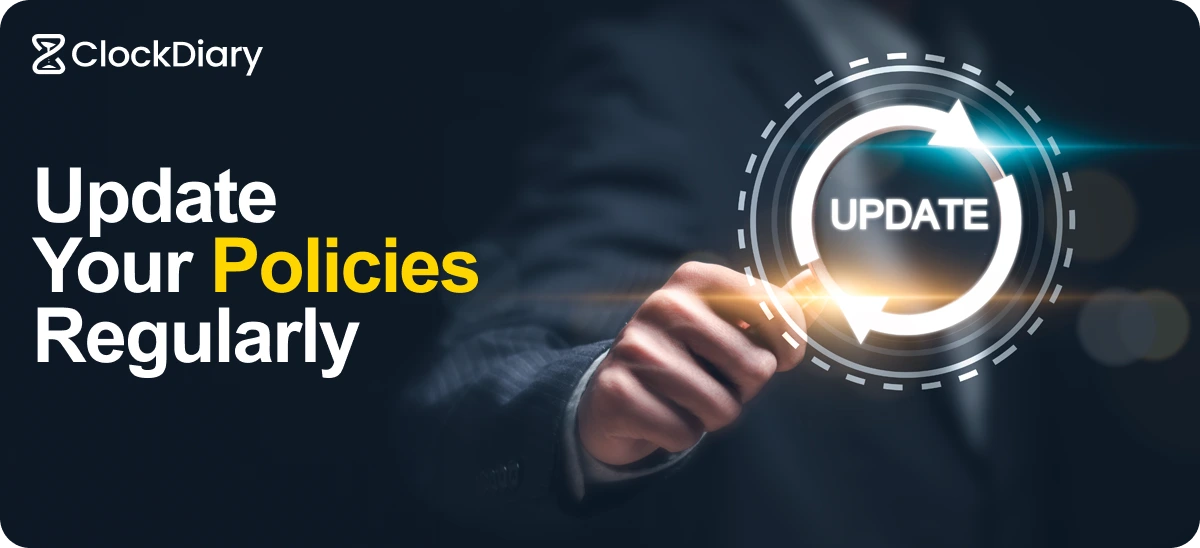
It must be pointed out here that if you don’t update your policies on a regular basis, you risk running into legal troubles or massive fines. An outdated policy also means you are breaking your company’s ethical standards. By keeping your policies up to date, you demonstrate a commitment to respecting employee privacy while maintaining accountability and productivity within your organization.
Before introducing time tracking into your workplace, ask employees what they think is reasonable to track and what is not. This way, you can incorporate a time-tracking system your employees are comfortable with.
You can select a time-tracking software or app that offers multiple options for tracking time so that everyone can choose the option that suits them best. Clockdiary, for instance, has the following time-tracking options:
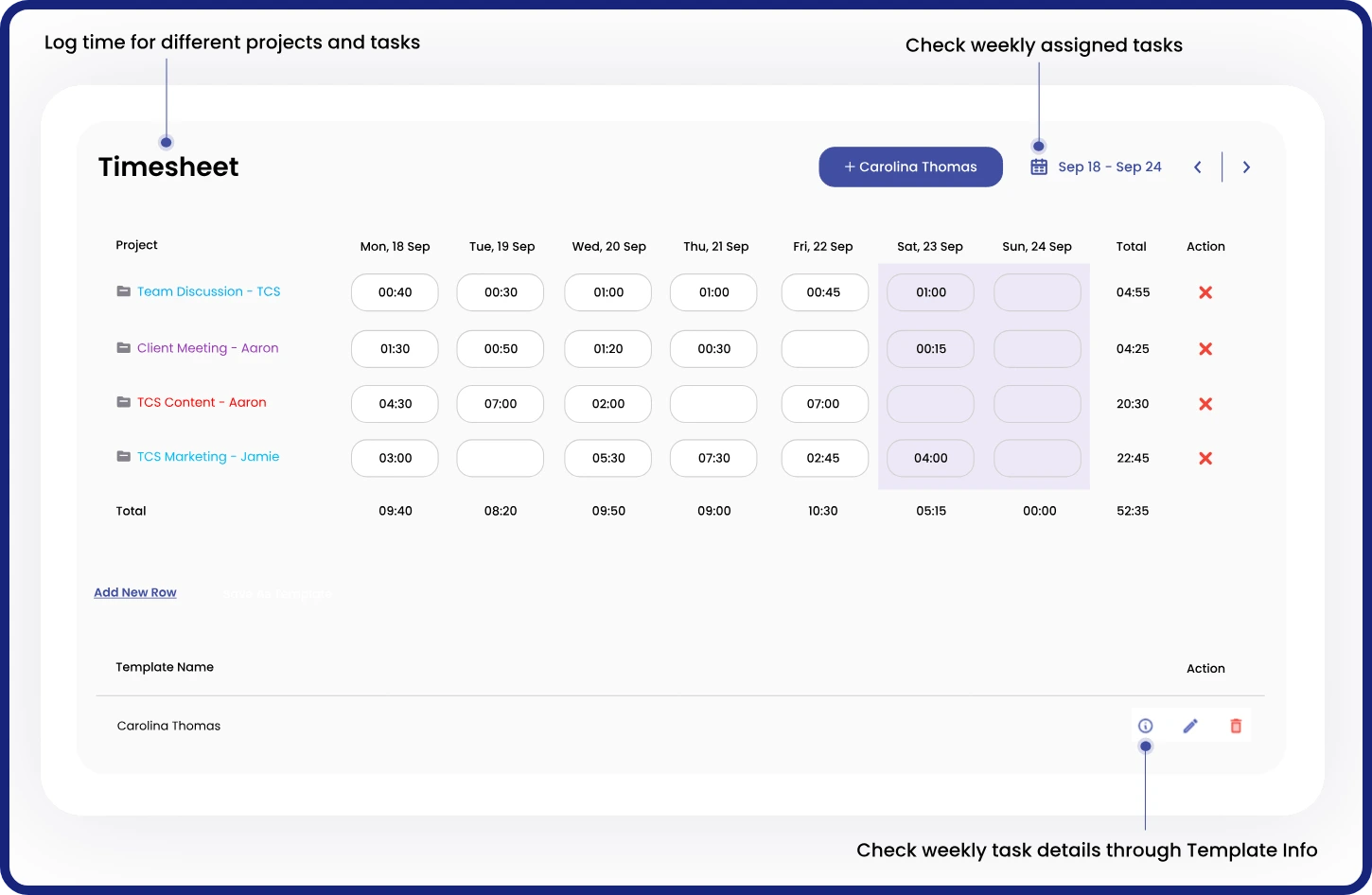
Clockdiary can prove to be a boon for employers who are not looking for extensive employee monitoring features. It is an employee-friendly app geared towards precise time tracking without breaching employee privacy. It allows employees to track their work hours and projects without intrusive monitoring, thereby giving them control over their data. But how does it make it possible? Well, besides automatic and manual time trackers, as aforementioned, it features an “Activity Tracker” that captures screenshots every 10 minutes to monitor employee activity.

What’s more? You can assign roles to employees and give them different permissions. This gives you complete control over who has access to certain information.
As an employer, you should strike the perfect balance between monitoring employees and securing their privacy. Having said that, employee monitoring is a critical task that just cannot be overlooked, as it is connected with productivity while providing employers with valuable insights into their staff as well.
We would like to point out here that employers must never violate employee privacy rights. Striking the perfect balance might be difficult. That is why we have suggested the following 9 ways to craft an effective monitoring plan that your staff is bound to appreciate. Also, don’t forget to use Clockdiary time-tracking software to track employee time without breaching privacy. Get in touch with us to incorporate this supremely engineered software into your workplace now and see the difference in productivity and employee satisfaction for yourself.
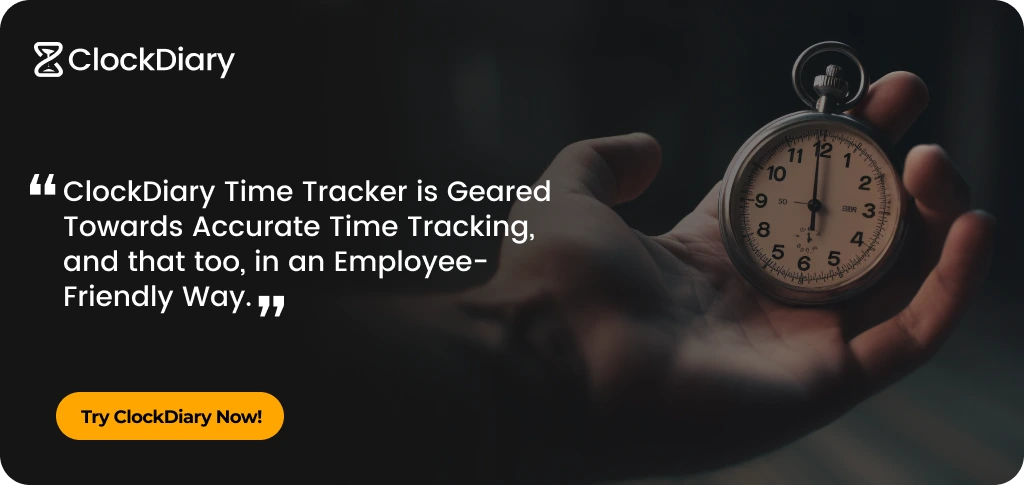
Employee monitoring can violate privacy if it goes beyond what is legally permitted or is performed without transparency and consent. However, when conducted ethically and with clear policies in place, it can balance business needs and respect for employee privacy.
Employee monitoring can be highly effective in improving productivity, enhancing data security, and better adherence to company policies. It also boosts accountability by providing insights into work habits and time management.
Employers can strike the perfect balance between the need to monitor employees and their privacy rights by employing monitoring tools like Clockdiary. The good thing is that it does not track any personal information. Instead, it tracks only work-related activities by capturing screenshots every 10 minutes.
Employers can perform ethical and legal employee monitoring, including surveilling employee computer usage, phone calls, and emails, as long as they comply with employee privacy laws and ensure employees consent.
To effectively monitor remote employees and track employee time, use tools like Clockdiary to track work hours, productivity, and project progress without breaching privacy. With features like automatic time tracking, project management, and detailed reporting, Clockdiary ensures accountability while maintaining employee trust.